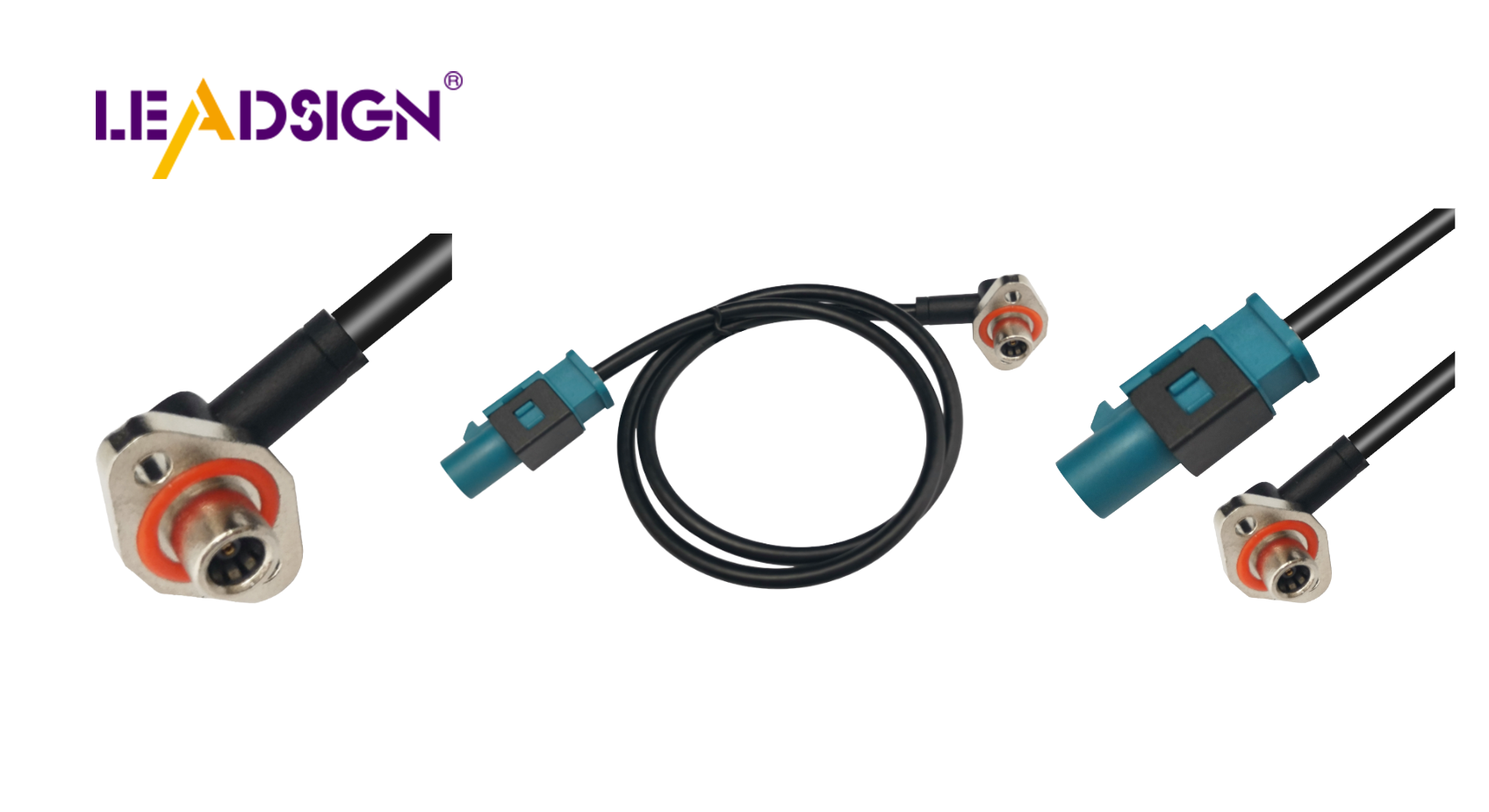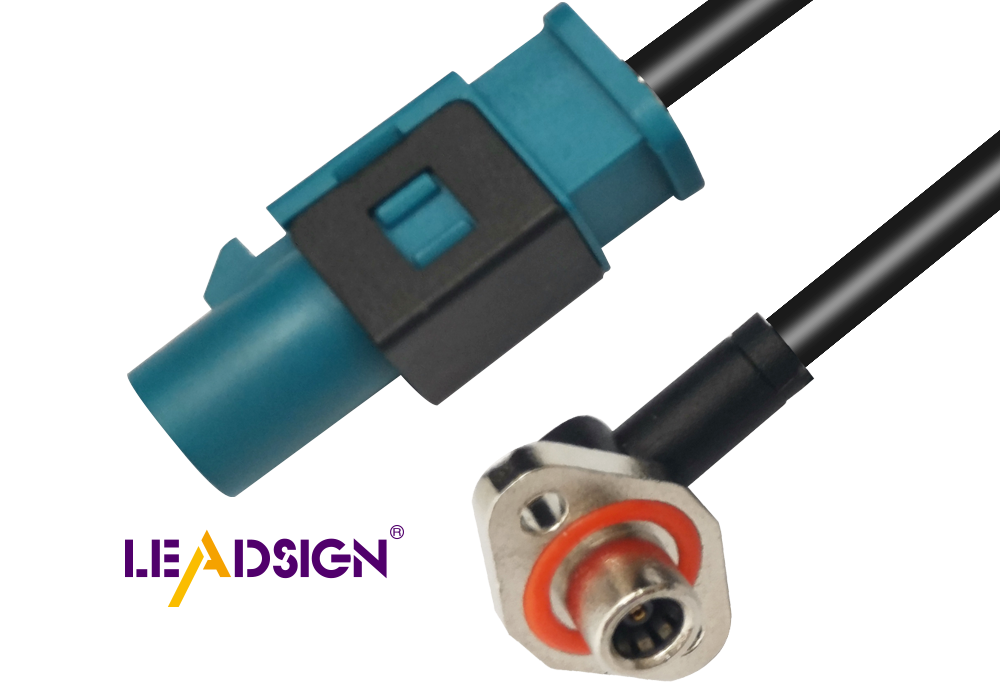Rigid and Semi-Rigid Coaxial Cables: Impact on Car Wire Connector Types

Rigid coax cables are important in cars. They affect car wire connectors a lot. Rigid coax cables are very stable and lose little signal. They work best where things don't move much. Semi-rigid coax cables are both stiff and bendy. They work well where there is some movement and shaking. Knowing these differences is key for cars. Cars need good communication and strong signals. Coaxial cables are used in car talks, GPS antennas, and entertainment systems inside cars. This shows how important they are in today's cars.
Characteristics of Rigid Coaxial Cables
Structure and Composition
Rigid coax cables are important because they have a special build. They have a solid outer conductor that keeps them steady. This strong outside helps the cable stay in shape and not bend. It is good for places where things don't move much. The solid part also helps stop signal loss, which is key for clear signals.
Inside, rigid coax cables have a wire covered by an insulator, then the solid shield. This setup lets them carry high radio frequency (RF) signals well. "Coaxial" means the wires line up around a center point, cutting down on noise and keeping signals clear.
Applications in Automotive Industry
In cars, rigid coax cables are used for high-frequency jobs. They work best where stability and low signal loss matter most. For example, they help with systems needing exact data transfer like ADAS and V2X tech.
Rigid coax cables do well where there is little movement. Their tough build makes them last longer without damage in tough spots. This is great for car parts that face hard conditions but need to work well. By giving a steady link, these cables help make sure important systems run right, helping keep cars safe and efficient today.
Characteristics of Semi-Rigid Coaxial Cables
Structure and Composition
Semi-rigid coax cables have a flexible outer conductor. It's made from solid copper tubing. This design gives great shielding, important for high-frequency use. The solid part stops electromagnetic interference (EMI) and signal loss. Unlike braided covers, the solid outside is both stiff and bendy. This lets the cable keep its shape but still bend for certain setups.
These cables are usually made to fit special system designs. Engineers can choose lengths, bends, and connectors they need. But once shaped, don't bend them more or they might break during setup. The semi-rigid style is great for RF and microwave engineers who want good signals.
Applications in Automotive Industry
In cars, semi-rigid coax cables are used where some bending is needed. They work well in spots with some movement and shaking. These cables are best where stability and flexibility are both needed.
Use in Environments Requiring Some Flexibility: Semi-rigid cables fit car systems that need small moves. They hold their shape but can be routed as needed in tricky car layouts.
Suitability for Moderate Movement and Vibration: These cables do well with moderate moves and shakes. Their strong build means they last in a moving car without losing signal quality.
By giving steady signals in tough spots, semi-rigid coaxial cables help modern car systems work right. They make sure important talks and data move smoothly, helping cars stay safe and run well.
Impact on Car Wire Connector Types

Compatibility with Rigid Coaxial Cables
Rigid coax cables need special connectors. These help them work well. Threaded Neill-Concelman (TNC) connectors are a great pick. They are tough and waterproof, perfect for stable places. TNC connectors handle up to 11 GHz, keeping signals strong.
Signal loss is a big worry with rigid coax cables. The solid outside keeps signals clear. But connectors matter too. Strong ones like TNC keep the signal steady and clear.
Compatibility with Semi-Rigid Coaxial Cables
Semi-rigid coax cables mix stiff and bendy parts. They need special connectors too. MCX connectors fit these cables well. They're small, fitting tight spaces in cars easily.
Keeping signals clear is key for semi-rigid cables. The bendy outside helps some, but good connectors do more. SMB connectors snap on tightly, holding signals even when things move or shake a bit.
Picking the Best Cable for Your Needs
Choosing the right coaxial cable for cars is important. You need to think about many things to make sure it works well and lasts long.
Things to Think About
Needs for Each Use
Different car uses need different cables. For example, rigid coax cables are great for high-frequency jobs where staying still is key. They work best in places with little movement, like fixed communication links inside cars. Semi-rigid coaxial cables are good because they are both stiff and bendy, so they fit spots with some movement and shaking.
Environment and Movement
Where the cable will be used matters a lot. Rigid coax cables do best in stable places without much moving around. They keep signals clear because of their strong outside part. But semi-rigid cables are better when some bending is needed. They can handle some shaking without messing up the signal.
Tips for Picking Cables
Checking How Well It Works
When picking a coaxial cable, check what you need it to do. Look at frequency range, impedance, and data rate for your car system. Rigid coax cables usually have less signal loss and stay steady, so they're great for high-frequency needs. Semi-rigid ones aren't as steady but bend more easily.
Asking Experts for Help
Talking to experts can help you pick the right cable. As CENRF, a pro in coaxial cables says: > "Getting the right coaxial cable is super important for good signals. We hope this article helps you choose the right one for your project. If unsure, ask an expert or research more before deciding."
"Getting the right coaxial cable is super important for good signals. We hope this article helps you choose the right one for your project. If unsure, ask an expert or research more before deciding."
Experts know about new tech and best ways to use them, making sure your choice fits all needs.
By thinking about these things and asking experts, choosing the right coaxial cable becomes easy. This makes sure car systems talk well and work right.
Rigid and semi-rigid coaxial cables are different. Rigid cables are very stable. They lose little signal, so they're good for still places. Semi-rigid cables can bend a bit but stay strong. They're good where things move some. These differences affect car wire connectors, changing how well they work.
When picking cables for cars, think about what you need them for and where they'll be used. Check how well they perform and ask experts to help choose the best cable. This way, cars can talk better and work smoothly.
See Also
Why FAKRA Coaxial Cables Matter in Automotive Systems
Harnessing FAKRA Coaxial Connectors for Maximum Efficiency
Enhancing Data Transfer in Vehicles with Advanced Connectors
Exploring the Flexibility and Advantages of FAKRA Connectors
The Crucial Role of FAKRA Connectors in Automotive Engineering

